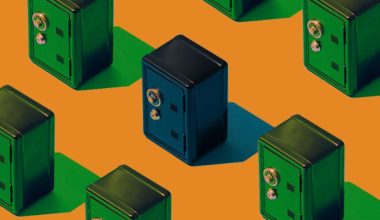There are several differences between fixed deposits (FDs) and recurring deposits (RDs) in terms of their features, deposit requirements, tenure, interest rates, benefits, and limitations. This article will provide an overview of both FDs and RDs, including their benefits and features, and will compare the key differences between these two types of deposit accounts.
Table of Contents Show
Difference Between Recurring Deposit and Fixed Deposit
The difference between fixed deposit and recurring deposit is given below:
| Parameters | Fixed Deposit | Recurring Deposit |
|---|---|---|
| When to deposit amount | Lump sum in one go | Every month |
| Who can open | Anyone with a bank account | Person with a regular source of income |
| Amount to be deposited | Varies from one bank to another | Particularly Rs 500 |
| Tenure | 7 days to 10 years | 6 months to 1o years and beyond |
| Types |
|
|
What is Recurring Deposit Account?
A recurring deposit (RD) is a banking service that lets people with a regular income deposit a fixed amount of money into their RD account every month. By doing this, customers can earn interest on their savings. RDs are a type of term deposit provided by banks.
- Customers deposit a fixed amount of money every month for a specific duration in a recurring deposit account.
- These accounts promote and support good saving habits.
- Recurring deposit accounts have different periods, such as short, medium, or long terms, and the interest rate provided by the bank may vary based on the chosen duration.
- Banks offer various types of recurring deposits designed for individuals, children, senior citizens, and non-resident Indians (NRIs), each with their own interest rates.
- The process of opening a recurring deposit account may vary among different banks.
- It is possible to close a recurring deposit account, but there may be a penalty charged for doing so.
What are the Features of a Recurring Deposit Account?
- Minimum monthly deposit amount, usually around Rs. 500
- Tenure ranges from 6 months to 10 years
- Option to open multiple accounts
- Minors can open accounts with parental supervision
- No partial withdrawals allowed
- Automatic deduction feature for monthly deposits
- Higher interest rates for senior citizens
- Penalty for early withdrawal
- Monthly deposits instead of lump sum upfront
What are the Types of Recurring Deposit Accounts?
The following are the various types of recurring deposit accounts in which a user can invest:
| Types of Recurring Deposit Account | Meaning |
|---|---|
| Regular recurring deposit account |
|
| Recurring deposit account for minors |
|
| Recurring deposit account for NRI |
|
| Recurring deposit accounts for senior citizens |
|
How to Open a Recurring Deposit Account Online?
Step 1: Log in to your bank’s mobile application.
Step 2: Look for the option to open a recurring deposit account, usually found under “investment” or “savings.”
Step 3: Enter the desired deposit amount and choose the tenure and type of recurring deposit account.
Step 4: Select the date for the monthly deposit to be made.
Step 5: Click the “proceed” or “submit” button to finish the process.
Read more: How to Calculate the Interest Rate of Recurring Deposit?
How to Open a Recurring Deposit Account Offline?
The options for opening an offline recurring deposit are as follows:
Step 1: Visit your nearest bank branch.
Step 2: Approach a bank representative and express your interest in opening a recurring deposit account.
Step 3: Request an application form for a recurring deposit account.
Step 4: Fill out the application form, providing details such as the monthly deposit amount, desired type of recurring deposit account, chosen tenure, and nominee information.
Step 5: Double-check the completed form for accuracy and ensure all required fields are filled.
Step 6: Submit the filled-out application form along with the initial deposit amount specified by the bank.
Step 7: The bank representative will process your application and verify the provided information.
Step 8: Once the application is processed successfully, the bank will open your recurring deposit account.
Step 9: You will receive a confirmation or account opening document from the bank.
Step 10: Start making regular monthly deposits as per the terms and conditions of the recurring deposit account.
What is a Fixed Deposit Account?
Fixed deposits, also known as term deposits or time deposits, are a safe way to save for the future. Here are some key features and benefits:
- Earn interest on your deposit for a fixed period of time.
- The interest rate remains the same throughout the deposit term.
- Choose to receive interest payments regularly or upon maturity.
- Funds cannot be withdrawn before maturity, with a penalty for early withdrawal.
What are the Key Features of Fixed Deposits?
- Requires a one-time lump sum payment, but additional deposits can be made separately.
- Offers guaranteed returns.
- Choose to receive interest payments monthly, quarterly, annually, or at maturity.
- Low liquidity investment.
- Generally, higher interest rates compared to other options.
- Returns are not affected by market fluctuations.
- No early withdrawal, but emergency or willful withdrawal may be possible with a penalty.
- Option to reinvest after maturity.
- No maximum limit on deposit amount.
What are the Types of Fixed Deposits?
The types of fixed deposits are:
| Type of fixed deposits | Explanation |
|---|---|
| Cumulative Fixed Deposit |
|
| Non-Cumulative Fixed Deposit |
|
| Bank deposits |
|
| Company deposits |
|
| Senior citizen FD |
|
| NRIs FDs |
|
| Regular FDs |
|
| Tax saving FDs |
|
| Standard FDs |
|
How to Open an FD Account Online?
Following are the steps to open an FD online:
Step 1: Log in to your bank’s online banking platform using your username and password.
Step 2: Look for the section dedicated to fixed deposits on the website or app.
Step 3: Fill in the necessary information on the provided form for opening a fixed deposit account.
Step 4: If you already have an account with the bank, you may not need to go through the Know Your Customer (KYC) process again. The bank already has your information.
Step 5: However, if you are opening a fixed deposit account with a new bank, make sure you have all the required KYC documents and a passport-sized photograph ready to upload or provide to the bank.
Step 6: Submit the completed form and any additional documents as requested by the bank.
How to Open an FD Account Offline?
Step 1: Visit the nearest bank branch to open an FD account.
Step 2: Ask for an application form for a fixed deposit account from the bank staff.
Step 3: Complete the form by providing all the required information and submit it to the concerned bank official.
Step 4: Deposit the required amount specified by the bank and collect the deposit receipt.
Step 5: If you are opening a fixed deposit account with a new bank, it is advisable to reach out to a bank official who can assist you throughout the process. Additionally, make sure to bring all the necessary Know Your Customer (KYC) documents and a passport-sized photograph to complete the account opening procedure.
Investing in Fixed Deposit Scheme? Find Out the Right Ones For You
There are several key differences between fixed deposits and recurring deposits, including the amount of money that can be deposited, the duration of the deposit, and the frequency of deposits. Fixed deposits allow individuals to lock in a specific amount of money for a predetermined period of time, while recurring deposits allow individuals to make regular deposits over a set period of time. Both types of accounts can be useful for encouraging savings habits, but the best choice will depend on an individual’s financial goals, needs, and the services and interest rates offered by different banks. It is important to carefully compare these factors before deciding which type of account to use.
Disclaimer: Nothing on this blog constitutes investment advice, performance data or any recommendation that any security, portfolio of securities, investment product, transaction or investment strategy is suitable for any specific person. You should not use this blog to make financial decisions. We highly recommend you seek professional advice from someone who is authorised to provide investment advice.










